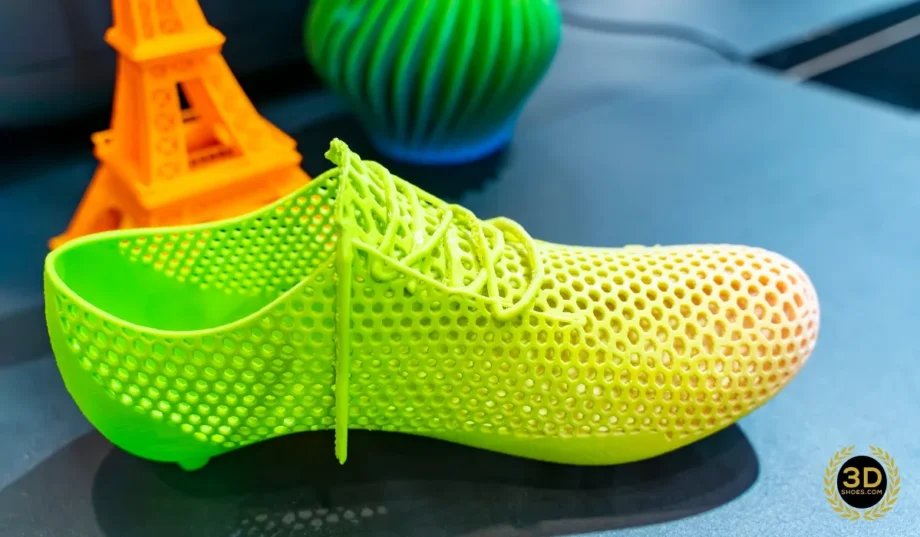Have you ever wondered how 3D printing is transforming the world of footwear? From custom designs to advanced materials, this innovative technology is redefining how shoes are made—and more importantly, how long they last. In this article, we’ll explore the fascinating ways 3D printing enhances shoe durability, ensuring that your favorite pair can stand the test of time.
The Basics of 3D Printing Technology
To understand how 3D printing contributes to shoe durability, it’s essential to grasp the basics of the technology. 3D printing, also known as additive manufacturing, involves creating objects layer by layer based on digital models. This process allows for unprecedented precision, making it possible to design and produce shoes with specific features that enhance strength and durability.
In the footwear industry, 3D printing is used for both prototyping and final production. By directly printing parts or entire shoes, manufacturers can experiment with different materials and structures, ensuring that each component is optimized for longevity.
The Connection Between 3D Printing and Shoe Durability
So, how exactly does 3D printing make shoes more durable? It all starts with precision. Traditional shoe manufacturing often involves cutting and assembling various materials, which can lead to weak points where different parts meet. In contrast, 3D printing can produce a shoe in one continuous piece, eliminating seams and joints that are prone to wear and tear.
Moreover, 3D printing allows for the customization of each shoe component. By adjusting the density and structure of materials, manufacturers can reinforce high-stress areas, making the shoe more resistant to damage. This level of customization ensures that the shoe is not only durable but also perfectly suited to the wearer’s needs.
Materials Used in 3D Printed Shoes
The durability of 3D printed shoes is heavily influenced by the materials used. Common materials include thermoplastics, elastomers, and even metallic powders. Each of these materials has unique properties that contribute to the shoe’s overall strength and flexibility.
Thermoplastic polyurethane (TPU), for example, is a popular choice for 3D printed shoes due to its excellent abrasion resistance and elasticity. Unlike traditional materials, TPU can withstand repeated stress without cracking or breaking, making it ideal for producing long-lasting footwear.
Benefits of 3D Printing in Shoe Durability
One of the primary benefits of 3D printing in enhancing shoe durability is the ability to create materials with superior properties. 3D printed materials are often more consistent and have fewer defects than those produced by traditional manufacturing methods. This consistency translates to better performance and longer life for the shoes.
Additionally, 3D printing significantly reduces material waste. Traditional manufacturing often involves cutting materials from larger sheets, leading to excess waste. With 3D printing, only the necessary amount of material is used, which not only benefits the environment but also ensures that each part of the shoe is made from the best possible material.
Examples of Durable 3D Printed Shoes
Several brands have already embraced 3D printing to create more durable shoes. Adidas, for instance, has developed its Futurecraft 4D line, which uses 3D printed midsoles designed to withstand rigorous use. These shoes have been tested for durability and have shown remarkable resistance to wear, even under extreme conditions.
Another example is the collaboration between New Balance and Formlabs, resulting in the TripleCell technology. This partnership has produced midsoles that are not only lightweight but also exceptionally durable, offering superior performance and longevity compared to traditional options.
Customization: Tailoring Shoes for Longevity
One of the standout advantages of 3D printing in footwear is the ability to customize shoes for individual users. Customization can significantly enhance shoe durability by ensuring a perfect fit, which reduces unnecessary stress on the shoe’s materials. When a shoe fits well, there’s less friction and pressure in any one area, which means the shoe wears out more evenly over time.
3D printing allows for the precise tailoring of each shoe to the unique shape of the wearer’s foot, as well as their specific activity needs—whether it’s running, hiking, or casual wear. This personalized approach not only enhances comfort but also extends the life of the shoe.
Improving Shoe Longevity Through Iterative Design
Another key advantage of 3D printing is the ability to iterate rapidly on designs. Traditional manufacturing processes can be slow and costly, making it difficult to experiment with new designs or materials. With 3D printing, designers can quickly produce prototypes, test them, and refine their designs to enhance durability.
This iterative process allows for continuous improvement. As new materials and technologies become available, they can be integrated into the design, further extending the life of the shoes. This adaptability is crucial in the ever-evolving world of footwear.
The Role of 3D Printing in Sustainable Shoe Production
Durability is not just about making shoes that last longer; it’s also about creating a more sustainable product. Shoes that last longer reduce the need for frequent replacements, which in turn decreases the overall environmental impact. 3D printing contributes to sustainability by enabling the production of shoes with longer lifespans, thus reducing waste and conserving resources.
Furthermore, 3D printing allows for the use of recycled and eco-friendly materials. These materials can be precisely applied to create durable shoes, contributing to both environmental sustainability and consumer satisfaction.
Comparing Traditional and 3D Printed Shoes
When comparing traditional shoes with 3D printed ones, the difference in durability is often striking. Traditional shoes are usually made from multiple pieces stitched or glued together, which can create weak points susceptible to damage. In contrast, 3D printed shoes are often made as a single, continuous piece, resulting in fewer points of failure.
Additionally, 3D printed shoes can be designed with optimized structures, such as honeycomb patterns, that provide strength without adding weight. These structures are difficult, if not impossible, to achieve with traditional manufacturing methods.
Challenges and Limitations of 3D Printing in Footwear
Despite its many advantages, 3D printing in footwear is not without its challenges. One of the main limitations is the current range of materials available. While significant progress has been made, the strength and durability of 3D printed materials still have room for improvement to match or surpass the best traditional materials.
There are also technological limitations. High-quality 3D printing can be expensive and slow, which can be a barrier to widespread adoption. However, as the technology continues to advance, these issues are likely to diminish.
The Future of 3D Printing in Durable Footwear
The future of 3D printing in footwear looks promising, particularly in the realm of durability. As material science advances, we can expect even more durable 3D printed materials that surpass traditional options. Additionally, emerging technologies like 4D printing—where materials can change properties over time—could further revolutionize shoe durability.
Manufacturers are also likely to explore new designs that leverage the unique capabilities of 3D printing to create shoes that are not only durable but also tailored to the specific needs of consumers.
Consumer Perception of 3D Printed Durable Shoes
Consumer perception plays a crucial role in the adoption of 3D printed shoes. Initially, there may be skepticism about the durability and quality of 3D printed footwear. However, as more brands demonstrate the superior longevity of these shoes, consumer confidence is likely to grow.
It’s important for brands to educate consumers about the benefits of 3D printed shoes, particularly in terms of durability and sustainability. As awareness increases, the demand for these innovative shoes is expected to rise.
Practical Tips for Consumers: Choosing Durable 3D Printed Shoes
If you’re considering investing in 3D printed shoes, here are a few tips to ensure you’re getting a durable product:
- Material Matters: Look for shoes made from high-quality 3D printed materials like TPU, known for its durability.
- Brand Reputation: Choose reputable brands that have a track record of producing durable 3D printed shoes.
- Fit and Comfort: Ensure the shoes are customized to your foot shape and activity needs, which will help extend their lifespan.
- Care and Maintenance: Like any shoe, proper care will extend the life of 3D printed shoes. Follow the manufacturer’s guidelines for cleaning and storage.
Conclusion
3D printing is revolutionizing the footwear industry, particularly in the realm of durability. By allowing for precise material application, customization, and rapid design iteration, 3D printing is creating shoes that not only last longer but also perform better. As the technology continues to evolve, we can expect even more innovations that will further enhance the durability and sustainability of footwear.
FAQs
- Are 3D printed shoes more durable than traditional ones?
- Yes, 3D printed shoes can be more durable due to the precision and customization in their manufacturing, which reduces weak points.
- How do I care for 3D printed shoes to ensure they last?
- Follow the manufacturer’s care instructions, which typically involve regular cleaning and proper storage to prevent material degradation.
- What brands offer the most durable 3D printed shoes?
- Brands like Adidas and New Balance are leading the way in producing durable 3D printed footwear with their Futurecraft and TripleCell lines.
- Can 3D printing be used for all types of shoes?
- While 3D printing is versatile, it’s currently most effective for performance and customized footwear. However, its use is expanding across different types of shoes.
- Is the investment in 3D printed shoes worth it for long-term durability?
- Yes, the enhanced durability and potential for a longer lifespan make 3D printed shoes a worthwhile investment for many consumers.




